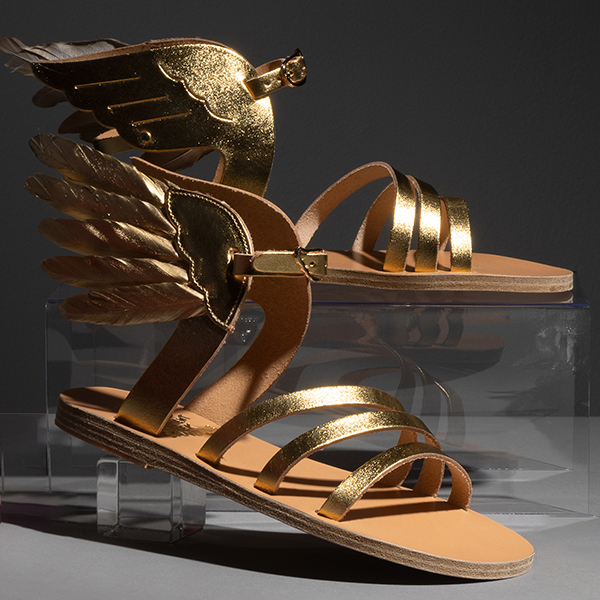New Acquisitions
For more information about how you can support the activities of The Museum at FIT, please visit Support MFIT.

Wu-Tang Clan executive producer Oliver "Power" Grant established Wu Wear in 1995, the year the group released the song "Wu Wear The Garment Renaissance." The Wu Wear brand went on to open stores in New York, Philadelphia, Atlanta, and Norfolk, Virginia. This shirt, which was featured in the window of Macy's department store, references the Wu-Tang Killa Bees, a hip hop collective of the Wu-Tang Clan and affiliate artists.
This shirt was on view in the 2023 exhibition Fresh, Fly, and Fabulous: Fifty Years of Hip Hop Style.

This Cuadro Tlahui blouse was co-designed by Guillermo Vargas of the Mexican fashion label ⅛ Takamura and artisan Paula Pérez Vázquez, an embroiderer from the village of Santa Maria Tlahuitoltepec. Over the course of almost two years, Vargas and Pérez Vázquez diligently co-created and produced the Cuadro Tlahui blouse, at times shipping pattern pieces back and forth between Mexico City and Oaxaca. The design combines the square pattern of the Cuadro blouse with the iconography of the people of Santa Maria Tlahuitoltepec, which includes the sun, water, mountains, and maguey (a type of agave plant) and are symbolic of the heritage and history of the people of this village. The Cuadro Tlahui blouse exemplifies how contemporary fashion and indigenous heritage can nurture one another.
This blouse was on view in the 2023 exhibition ¡Moda Hoy! Latin American and Latinx Fashion Design Today.

Fairy tales and myths have long told us that shoes are magical objects. Because shoes were symbolically associated with movement and journeys, Hermes-Mercury, the Greco-Roman god of travelers, wore boots or sandals with wings.
These shoes were on view in the 2022 exhibition Shoes: Anatomy, Identity, Magic.

Designer Phillip Lim partnered with the Panda Express restaurant chain in 2022 to design a clothing line to raise funds to combat food-insecurity in AAPI communities. They wrote, "As two Asian American-owned and immigrant founded companies, 3.1 Phillip Lim and Panda Express have shared missions to support community and foster cultural appreciation through fashion and food."
This t-shirt was on view in the 2024 exhibition Food & Fashion.
Below are the types of objects in the collections of The Museum at FIT.

The accessories collection consists of approximately 15,000 objects that date from the mid-17th century to the present day. The collection has a particularly strong emphasis on designer accessories from the second half of the 20th century.
The accessories collection is supported by the Solomon-Sloan Endowment Fund, which was established in 2005 to facilitate the acquisition, conservation, documentation and exhibition of accessories.
- The footwear collection contains more than 4,000 pairs of shoes, boots and sandals. It includes examples by designers such as Manolo Blahnik, Roger Vivier, Herbert Levine, and Salvatore Ferragamo.
- The millinery collection contains more than 3,000 hats by famous milliners such as Caroline Reboux, Lilly Daché, Halston and Philip Treacy. There are also many examples from designers such as Christian Dior, Balenciaga and Jacques Fath.
- The handbag collection includes fine examples by luxury houses such as Hermés and Gucci as well as examples by Roberta di Camerino, Judith Leiber and Bonnie Cashin for Coach.
- Other accessories include fans, gloves, belts, hosiery and costume jewelry.

The Costume Collection consists of more than 50,000 objects dating from the mid-18th century to the present. The strength of the collection lies in its 20th-century holdings and, particularly, in couture and ready-to-wear women's clothing. The collections are currently being computerized to facilitate research.
- The costume collection includes fashion by designers such as Azzedine Alaïa, Balenciaga, Chanel, Comme des Garçons, Dior, Galanos, Halston, Charles James, Norell, Paul Poiret, Yves Saint Laurent, and Vivienne Westwood.
- The Halston Archives and Study Room hold designs, patterns, and related records documenting this important designer's life work.
- The menswear collection features some 2,000 garments ranging from formal to activewear, including suits, coats, vests, and uniforms.
- Also included are swimwear, lingerie, outerwear, and knitwear.

The Textile Collection consists of more than 30,000 textiles dating from the fifth century to the present, and includes the work of artists and designers such as Junichi Arai, Salvador Dali, Raoul Dufy, and William Morris.
- The textile collection includes apparel and home furnishing fabrics, embroideries, and shawls.
- The collection also includes a number of ribbon sample books.
- The J.B. Martin Velvet Room archives handwoven and production velvets spanning a 125-year period.

The Photography Archive features the work of fashion photographers Louise-Dahl Wolfe (1895-1989), who produced 86 cover images and thousands of interior shots for Harper’s Bazaar magazine, and John Rawlings (1912-1970), who had more than 200 Vogue and Glamour magazine covers.
Image: Louise Dahl-Wolfe photograph of model Sandra Payson. Featured in Harper’s Bazaar, March 1947, page 205, gift of Louise Dahl-Wolfe, 74.84.54
For those looking for the Herman Landshoff collection, the archive has been transferred
to:
Munchner Stadtmuseum
Sammlungsleiter Fotomuseum
St.-Jakobs-Pl. 1
80331 Munchen
The contact for the collection is:
Dr. Ulrich Pohlmann
Tel.: 089/233-22948
Fax.: 089/233-27969
email.: [email protected]